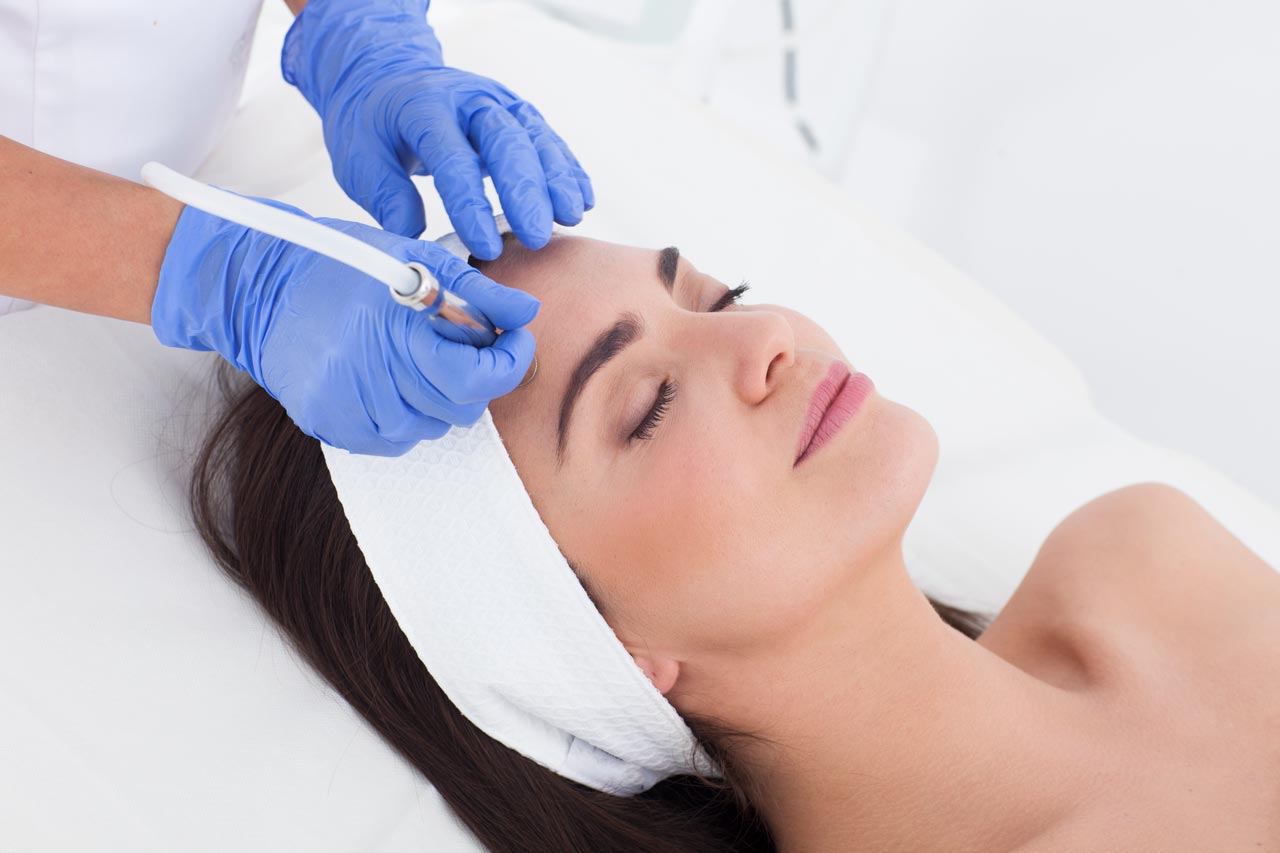
Chemical peels and microdermabrasion are skin-exfoliating treatments that use acids to remove dead skin cells from the epidermis and, at times, the dermis. With that in mind, how do they affect the skin? Do they make it age, or do they do the opposite? Let’s shed some light on the most common myths about microdermabrasion.
Microdermabrasion may or may not trigger a peeling response on your skin. The treatment's efficacy is not determined by visible exfoliation, instead, it is only a potential side effect.
The most recent formulations of chemical peels can induce cellular changes without the need for extensive peeling and downtime. Additionally, the extent of peeling that a person will experience depends on their skin condition, sensitivity level, and chemical potency during the session.
Chemical peeling treatments do not cause premature skin aging. Instead, they do the opposite; they reduce or remove wrinkles, fine lines, age spots, sun damage, and discolorations.
Chemical peels can also be used to reduce the appearance of enlarged pores, acne, rosacea, scarring, and redness.
When it comes to chemical peels, a series of treatments is always more effective. The initial session is likely to yield only marginal improvements. Most skin issues are treated with a series of six to eight peel sessions spaced four to six weeks apart.
Redness and slight irritation are expected effects of non-invasive skin procedures like chemical peeling. However, it shouldn't be severe to the point that it causes discomfort or scabbing.
There are chemical peels designed specifically for sensitive and rosacea-prone skin. These special chemical peels contain acids and compounds that calm the inflammation associated with sensitive skin and reinforce capillary walls to reduce redness. There are also sensitive skin peels that aid in lymphatic drainage, helping eradicate irritation-causing microorganisms on the skin's surface.
Chemical peel treatments can treat dry skin. They remove dead skin cells, allowing the skin to restore its natural moisture barrier. The procedure also allows skincare products to penetrate into the deeper layers of the epidermis and dermis.
It is common to get a breakout after chemical peel treatment. After all, the process is meant to exfoliate dead skin cells. It brings impurities to the surface of the skin and triggers pore cleansing.
While breakouts are unsightly, they are usually transitory and don’t necessarily mean that something is wrong with the procedure. Post-treatment breakout is an essential element of the peeling process that obtains the intended results.
The skin's response to chemical peel treatment may differ after every session because of the following factors:
Chemical peels are not only helpful in removing skin blemishes, but they also assist in maintaining healthy skin. They can be performed to prevent problems like dull skin, premature aging, clogged pores, and uneven skin tone. Regular mild chemical peels can also help keep the skin feeling hydrated and smooth.
Your daily skincare routine greatly affects your skin's response to chemical peels. Religiously following a regimen to maintain healthy skin is almost the same as preparing your skin inside the clinic right before the procedure. The better your skin condition is, the more efficient the peel will be in triggering a healthy and normal response from your body.
Chemical peels come in a variety of types, each being designed to treat a specific skin problem. To acquire the best outcome, it is best to talk with your skincare professional. They can assist you in choosing the most appropriate type for your skin.
Expect your skincare professional to apply an exfoliant acid on your face. They will start with the areas with thicker skin like the cheeks, chin, and nose. Then, they will proceed to do the same on the areas with thinner skin, like around the eyes and mouth.
Once the peeling treatment is done, they will apply cool saline compresses to get rid of excess exfoliant acid. Your skincare professional may also recommend you use an unscented emollient or weak vinegar solution on your face for a few days to help the skin heal.
During the first 24-48 hours, keep your face dry even when you shower. Your skin may peel and swell for 1-2 weeks, depending on the type of exfoliant acid used and the depth or intensity of the peel. During this time, do not use any skincare product or makeup. Wait for your skin to fully heal.
Chemical peels are meant to bring out the best in your skin. With all the myths surrounding it, it is important to follow your skincare professional's advice to ensure the effectiveness and prevent unwanted irritation post-procedure. To get the best results, work with an experienced clinic and professionals who are licensed and skilled in the type of treatment you want.
Skin Deep Med Spa Boston is a trusted clinic for microdermabrasion and chemical peel treatments. We also provide other skin rejuvenation procedures like microneedling, dermal fillers, laser hair removal, Botox, Dysport, Kybella, HydraFacial, Sculptra, and Voluma. Our injections are done by a registered nurse, and all esthetic procedures are done by a licensed medical esthetician. Give us a call at (617) 812-0954 or schedule an appointment online to find out if we are the right fit for your skin needs.